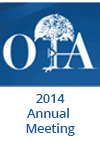
OTA 2014: Early mobilization favourable to immobilization for simple elbow dislocations

OTA 2014: Early mobilization favourable to immobilization for simple elbow dislocations
Early Mobilization Versus Plaster Immobilization of Simple Elbow Dislocations: Results of the FuncSiE Multicenter Randomized Clinical Trial
CONFERENCE ACE REPORTS
This ACE Report is a summary of a conference presentation or abstract. The information provided has limited the ability to provide an accurate assessment of the risk of bias or the overall quality. Please interpret the results with caution as trials may be in progress and select results may have been presented.
Synopsis
100 adult patients with simple elbow dislocations were randomly assigned to early mobilization or plaster immobilization after closed reduction. This study aimed to compare the functional and clinical outcomes of both treatment methods at 12 months post-intervention. The findings from this trial suggested better functional outcomes in patients who participated in early mobilization than those who ...
To view the full content, login to your account,
or start your 30-day FREE Trial today.
FREE TRIAL
LOGIN
Forgot Password?
Explore some of our unlocked ACE Reports below!

Learn about our AI Driven
High Impact Search Feature
Our AI driven High Impact metric calculates the impact an article will have by considering both the publishing journal and the content of the article itself. Built using the latest advances in natural language processing, OE High Impact predicts an article’s future number of citations better than impact factor alone.
Continue



 LOGIN
LOGIN

Join the Conversation
Please Login or Join to leave comments.